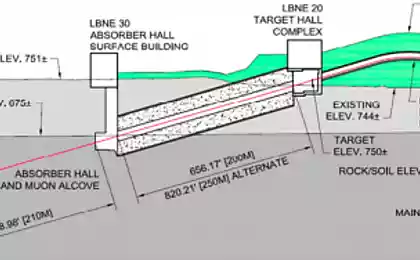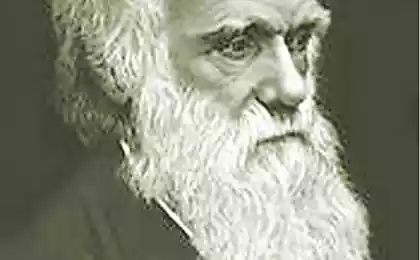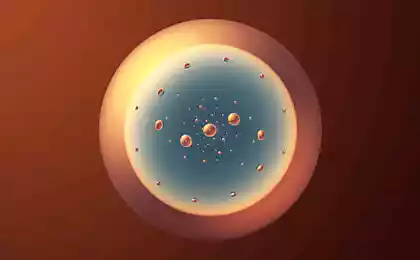578
As neutrinos ,which barely exist, got the Nobel prize
Neutrinos require patience. They are worth, and the awarding of the Nobel prize in physics confirms this. In the same way as the related award in 1988, 1995 and 2002. Ironically, these almost imperceptible particles can disclose things that can no longer be seen. You could start by telling me about what a neutrino is an elementary particle, but this is a bad start. They are called basic not because they are easy to understand — very easy, — but because they seem to point in size, and we can't break them into smaller components.
There is simply no such thing as half a neutrino. Is the smallest element in the Universe.
Atoms, despite its Greek name ("indivisible"), elementary particles are not, because they can be disassembled. The atom is represented by a cloud of electrons surrounding a tiny, dense nucleus consisting of protons and neutrons, which can also be split into top and bottom quarks.
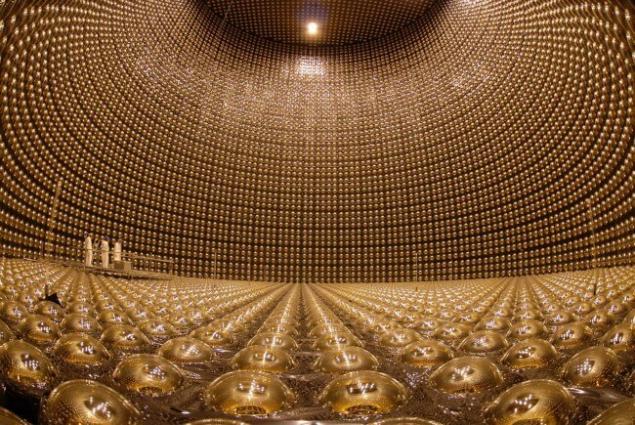
Particle accelerators, which disperse them to relativistic speeds and Bang them together, help us to discover new elementary particles. First, because of the principle E = mc^2, the energy of the collision can convert into mass of the particles. Second, the higher the beam energy of the accelerator, the more accurately we can analyze the composite structure, just as with x-rays we see things smaller than visible light.
We were unable to disassemble the electrons or quarks.
Are elementary particles that form the basic components of ordinary matter: building blocks "LEGO" of our Universe. Remarkably, there are many heavy counterparts of the known particles that exist for only fractions of a second and are not part of normal matter. Electron is the muon and the Tau.
What is a neutrino? What these elementary particles — the neutrino, different from all the other elementary particles? They are unique in that a nearly massless and nearly ever interact with anything. These features, although different, are often combined.
The mystery is, why do neutrinos although almost, but not quite massless. Why are they almost ever interact with anything, we know that they do not feel electromagnetic or strong interactions that hold the nucleus and the atoms, only the weak interaction (and gravity, albeit weakly, because of the small mass).
Although neutrinos are not part of normal matter, they are all around us — trillions of neutrinos from the Sun pass through your eye every second. Hundreds of them per cubic centimeter remained after the Big Bang. Because neutrinos interact so rarely, it is almost impossible to observe them, and you didn't feel it.
Of the neutrino, there are other strange aspects. They are of three types, flavors — electron, muon and Tau neutrinos, corresponding to the three charged particles with which they are in pairs, and they all seem to be stable, unlike the older counterparts of the electron.

Because the three flavor neutrinos are almost identical, there is a theoretical possibility that they can be transformed into each other, which is another unusual aspect of such particles, which in principle could lead us to new physics.
This transformation requires three things: that the neutrino mass were non-zero, is different for different types, and that a neutrino of a certain flavor were combinations of quantum neutrino of a certain mass (this is called "neutrino mixing").
For many decades in General, it was expected that none of these conditions are not met. Though hope never died.
Astronomy of the invisible particles In the end, nature has provided the necessary conditions, and the experimenters found everything you need, with the support of calculations of theorists. It took decades of experimentation and tremendous efforts, while in 1998, the experiment Super-Kamiokande in Japan, has not announced finding evidence that muon neutrinos produced in the Earth's atmosphere, change its type (say, Tau-neutrino).
Proof that this happens with the neutrinos come from below, passing a long distance through the Earth, but not "top" when the neutrinos have passed a short distance through the atmosphere. Since the neutrino is (almost) the same at different places on Earth, it is possible to measure "before" and "after".
In 2001 and 2002, the neutrino Observatory in Sudbury Canada have provided strong evidence that electron neutrinos produced in the core of the Sun, also change the flavor. This time the proof is manifested in the fact that the electron neutrino has disappeared, and then appeared in other types (as I think, in the form of a mixture of muon and Tau neutrinos).
Each of these experiments were observed two times less neutrinos than expected by theoretical predictions. It is true that Takaaki kajita and Arthur McDonald shared the Nobel prize in half.
In both cases, quantum-mechanical effects, which usually operate only at microscopic distances, observed in the terrestrial and the astronomical scale of distances.
As stated on the cover of The New York Times in 1998, "Mass detection of the elusive particle: universe may never be the same."
Obvious signs of changes of flavor neutrinos confirmed and studied in detail in the laboratory, show that neutrinos have mass and these masses are different for the different neutrino types. It is interesting that we don't yet know what values have these masses, although other experiments show that they must be millions of times smaller than the mass of the electron, or perhaps even less.
This is the title. The rest of the story is that mixing different flavors of neutrinos happens everywhere. You can decide that when projections are not met, is bad, but this type of failure is quite bad, because we learn something new.
International society hunters neutrino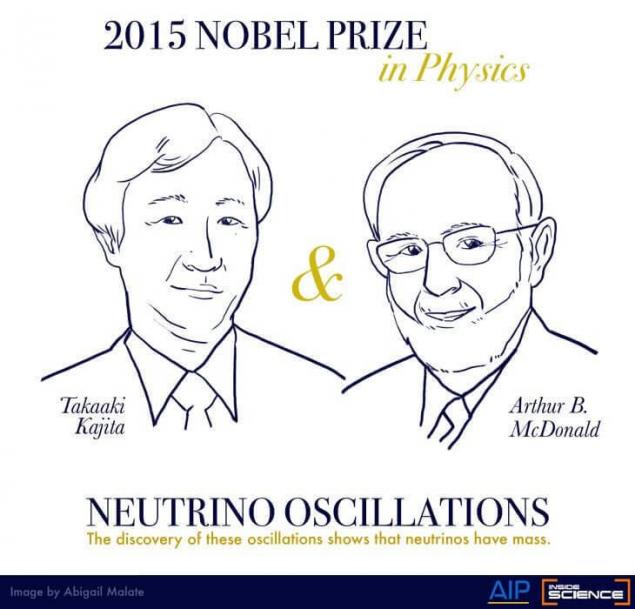
The community of physicists who study neutrinos, in General welcomes the award of the Nobel prize Takaaki and Arthur. It would also be nice to mention a number of other people, experimenters and theorists who contributed to the study of neutrinos.
It took many years to build and conduct these experiments, which were themselves based on a slow, difficult and largely thankless work for decades, requiring the efforts of hundreds of people. This includes a significant contribution of the USA in Super-Kamiokande and neutrino Observatory Sudbury.
"When I first started working on neutrinos, more than 20 years ago, many people, including prominent scientists, said I was wasting my time. Later others called me to work on something else, because "the people working on the neutrinos will not work," says John BICK, Professor of physics and astronomy of the National University of Ohio. Even now, many physicists and astronomers believe that these scientists are chasing something imaginary.
"But it's not. Neutrinos are real. They are an integral part of physics that shed light on the origin of the particles, the asymmetry of particles and antiparticles in the Universe and, perhaps, the existence of new forces that are too weak to link them with other particles." They are an integral part of astronomy that detects high-energy accelerators in the Universe that are inside the dense of stars and perhaps new and not yet discovered astrophysical objects.
Tiny particles, big mysteries Why do we have to worry about it, why should it go beyond our curiosity that drives our desire to explore strange parts of the Universe?
The weak force, which you feel neutrinos, responsible for the transition from protons to neutrons, the power of nuclear fusion reactions in the Sun and other stars and create the elements that make planets and life possible by themselves.
Neutrinos are the only component of this dark matter, which we understand and study other aspects will allow us to understand the structure and evolution of the Universe as a whole.
If the neutrino mass were larger, the universe would look completely different, and maybe we wouldn't be here.
Finally, if you are especially pragmatic, physics and astrophysics of neutrinos — a very difficult job that requires the invention of sensitive detectors and technologies. This knowledge has other applications; for example, using a neutrino detector, we might say, whether a nuclear reactor, what is its power output and even if it produces plutonium. It is quite possible to find applications in the real world.
The past decade in physics and astronomy neutrinos were spectacular, but even more incredible things yet to happen. The neutrino Observatory IceCube at the South Pole looking for high-energy neutrinos that are born outside of our galaxy.
Super-Kamiokande revealed the plan to improve its sensitivity to antineutrinos compared to neutrinos. The international community plans to build a new neutrino factory in which powerful beams of neutrinos will be sent from Fermilab in Illinois to a detector in the Homestake mine in South Dakota. Who knows what else we'll find?
We are all very, very welcome. published
Author: Ilya Hel
P. S. And remember, only by changing their consumption — together we change the world! ©
Join us in Facebook , Vkontakte, Odnoklassniki
Source: hi-news.ru/science/kak-nejtrino-kotorye-edva-sushhestvuyut-zapoluchili-nobelevskuyu-premiyu.html
There is simply no such thing as half a neutrino. Is the smallest element in the Universe.
Atoms, despite its Greek name ("indivisible"), elementary particles are not, because they can be disassembled. The atom is represented by a cloud of electrons surrounding a tiny, dense nucleus consisting of protons and neutrons, which can also be split into top and bottom quarks.

Particle accelerators, which disperse them to relativistic speeds and Bang them together, help us to discover new elementary particles. First, because of the principle E = mc^2, the energy of the collision can convert into mass of the particles. Second, the higher the beam energy of the accelerator, the more accurately we can analyze the composite structure, just as with x-rays we see things smaller than visible light.
We were unable to disassemble the electrons or quarks.
Are elementary particles that form the basic components of ordinary matter: building blocks "LEGO" of our Universe. Remarkably, there are many heavy counterparts of the known particles that exist for only fractions of a second and are not part of normal matter. Electron is the muon and the Tau.
What is a neutrino? What these elementary particles — the neutrino, different from all the other elementary particles? They are unique in that a nearly massless and nearly ever interact with anything. These features, although different, are often combined.
The mystery is, why do neutrinos although almost, but not quite massless. Why are they almost ever interact with anything, we know that they do not feel electromagnetic or strong interactions that hold the nucleus and the atoms, only the weak interaction (and gravity, albeit weakly, because of the small mass).
Although neutrinos are not part of normal matter, they are all around us — trillions of neutrinos from the Sun pass through your eye every second. Hundreds of them per cubic centimeter remained after the Big Bang. Because neutrinos interact so rarely, it is almost impossible to observe them, and you didn't feel it.
Of the neutrino, there are other strange aspects. They are of three types, flavors — electron, muon and Tau neutrinos, corresponding to the three charged particles with which they are in pairs, and they all seem to be stable, unlike the older counterparts of the electron.

Because the three flavor neutrinos are almost identical, there is a theoretical possibility that they can be transformed into each other, which is another unusual aspect of such particles, which in principle could lead us to new physics.
This transformation requires three things: that the neutrino mass were non-zero, is different for different types, and that a neutrino of a certain flavor were combinations of quantum neutrino of a certain mass (this is called "neutrino mixing").
For many decades in General, it was expected that none of these conditions are not met. Though hope never died.
Astronomy of the invisible particles In the end, nature has provided the necessary conditions, and the experimenters found everything you need, with the support of calculations of theorists. It took decades of experimentation and tremendous efforts, while in 1998, the experiment Super-Kamiokande in Japan, has not announced finding evidence that muon neutrinos produced in the Earth's atmosphere, change its type (say, Tau-neutrino).
Proof that this happens with the neutrinos come from below, passing a long distance through the Earth, but not "top" when the neutrinos have passed a short distance through the atmosphere. Since the neutrino is (almost) the same at different places on Earth, it is possible to measure "before" and "after".
In 2001 and 2002, the neutrino Observatory in Sudbury Canada have provided strong evidence that electron neutrinos produced in the core of the Sun, also change the flavor. This time the proof is manifested in the fact that the electron neutrino has disappeared, and then appeared in other types (as I think, in the form of a mixture of muon and Tau neutrinos).
Each of these experiments were observed two times less neutrinos than expected by theoretical predictions. It is true that Takaaki kajita and Arthur McDonald shared the Nobel prize in half.
In both cases, quantum-mechanical effects, which usually operate only at microscopic distances, observed in the terrestrial and the astronomical scale of distances.
As stated on the cover of The New York Times in 1998, "Mass detection of the elusive particle: universe may never be the same."
Obvious signs of changes of flavor neutrinos confirmed and studied in detail in the laboratory, show that neutrinos have mass and these masses are different for the different neutrino types. It is interesting that we don't yet know what values have these masses, although other experiments show that they must be millions of times smaller than the mass of the electron, or perhaps even less.
This is the title. The rest of the story is that mixing different flavors of neutrinos happens everywhere. You can decide that when projections are not met, is bad, but this type of failure is quite bad, because we learn something new.
International society hunters neutrino

The community of physicists who study neutrinos, in General welcomes the award of the Nobel prize Takaaki and Arthur. It would also be nice to mention a number of other people, experimenters and theorists who contributed to the study of neutrinos.
It took many years to build and conduct these experiments, which were themselves based on a slow, difficult and largely thankless work for decades, requiring the efforts of hundreds of people. This includes a significant contribution of the USA in Super-Kamiokande and neutrino Observatory Sudbury.
"When I first started working on neutrinos, more than 20 years ago, many people, including prominent scientists, said I was wasting my time. Later others called me to work on something else, because "the people working on the neutrinos will not work," says John BICK, Professor of physics and astronomy of the National University of Ohio. Even now, many physicists and astronomers believe that these scientists are chasing something imaginary.
"But it's not. Neutrinos are real. They are an integral part of physics that shed light on the origin of the particles, the asymmetry of particles and antiparticles in the Universe and, perhaps, the existence of new forces that are too weak to link them with other particles." They are an integral part of astronomy that detects high-energy accelerators in the Universe that are inside the dense of stars and perhaps new and not yet discovered astrophysical objects.
Tiny particles, big mysteries Why do we have to worry about it, why should it go beyond our curiosity that drives our desire to explore strange parts of the Universe?
The weak force, which you feel neutrinos, responsible for the transition from protons to neutrons, the power of nuclear fusion reactions in the Sun and other stars and create the elements that make planets and life possible by themselves.
Neutrinos are the only component of this dark matter, which we understand and study other aspects will allow us to understand the structure and evolution of the Universe as a whole.
If the neutrino mass were larger, the universe would look completely different, and maybe we wouldn't be here.
Finally, if you are especially pragmatic, physics and astrophysics of neutrinos — a very difficult job that requires the invention of sensitive detectors and technologies. This knowledge has other applications; for example, using a neutrino detector, we might say, whether a nuclear reactor, what is its power output and even if it produces plutonium. It is quite possible to find applications in the real world.
The past decade in physics and astronomy neutrinos were spectacular, but even more incredible things yet to happen. The neutrino Observatory IceCube at the South Pole looking for high-energy neutrinos that are born outside of our galaxy.
Super-Kamiokande revealed the plan to improve its sensitivity to antineutrinos compared to neutrinos. The international community plans to build a new neutrino factory in which powerful beams of neutrinos will be sent from Fermilab in Illinois to a detector in the Homestake mine in South Dakota. Who knows what else we'll find?
We are all very, very welcome. published
Author: Ilya Hel
P. S. And remember, only by changing their consumption — together we change the world! ©
Join us in Facebook , Vkontakte, Odnoklassniki
Source: hi-news.ru/science/kak-nejtrino-kotorye-edva-sushhestvuyut-zapoluchili-nobelevskuyu-premiyu.html
The blue color in the interior: 26 spectacular examples
Canadians EN masse are switching to electric cars








